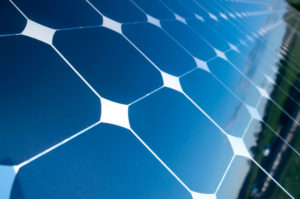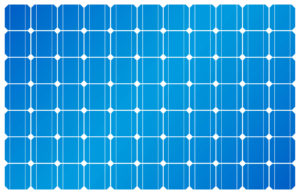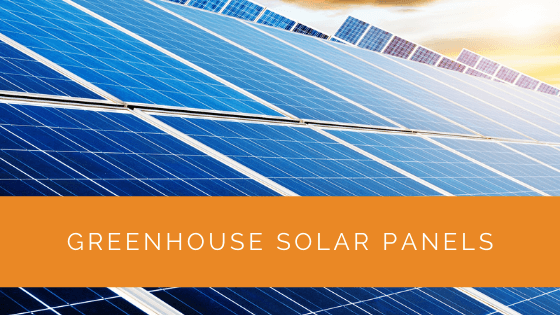Are you very conscious about your carbon footprint and love investing in clean energy? Maybe you care about your environmental impact on Earth so you can reduce carbon emissions to create a cleaner world.
If this sounds like you, you have come to the right place! Solar-powered greenhouses are the future, and you must be well-informed about them. Keep reading if you want an easy step-by-step guide about how a greenhouse with solar panels works.
Contents
- 1 Key Takeaways
- 2 What Are Solar Greenhouses?
- 3 What Are the Different Types of A Solar Greenhouse?
- 4 How Can You Use a Solar Panel to Heat a Greenhouse?
- 5 The Different Types of Solar Heating Panels
- 6 Effective Ways to Power a Solar Greenhouse with Solar Panels
- 7 How Much PV Power Will You Need for The Heating of Your Greenhouse?
- 8 Case Study: Implementing Solar Panels in a Greenhouse for Sustainable Agriculture
- 9 Expert Insights From Our Solar Panel Installers About Greenhouse Solar Panels
- 10 Discover the Power of Solar with Solar Panels Network
- 11 Conclusion
Key Takeaways
- Solar-powered greenhouses offer an environmentally friendly way to grow plants by harnessing the sun’s energy through glass or plastic walls, making them cost-effective and suitable for the winter season.
- There are two main solar greenhouses: passive solar greenhouses, which rely solely on sunlight for heating, and active solar greenhouses, which use photovoltaic cells to control temperature and are more modern and efficient.
- To effectively use solar panels for greenhouse heating, consider factors such as panel orientation, location, and climate conditions, and choose between monocrystalline and polycrystalline solar panels based on cost-efficiency and efficiency trade-offs.
What Are Solar Greenhouses?
The most important question is the most basic one. What exactly is a solar-powered greenhouse? Well, for starters, let’s define what a greenhouse is. A greenhouse is a space where you keep plants alive by controlling the environment in which they grow.
The upkeep includes using various water tanks, battery backup, an AC inverter, and sometimes concrete walls to minimise heat loss. A solar greenhouse operation is very different from a regular greenhouse. Don’t you think that’s interesting?
The plants inside solar greenhouse absorb the sun’s energy through the glass or plastic walls. The roof is the same so that direct sunlight can reach the soil and the plants grow better. This is cost-effective and great for the winter season. That’s a lot of science to take in!
What Are the Different Types of A Solar Greenhouse?
The cool thing about having a solar greenhouse is that it comes in different varieties. Hence, you can choose the solar panel kit, the power electric equipment and how much power you want to put into the solar greenhouses. You surely love having options!
There are two major different solar greenhouses. The first is a passive solar greenhouse system, and the second is an active one. They both are different from a traditional greenhouse, and the solar panels work at a low cost.
Passive Solar Greenhouse System
In a passive solar system, only sunlight generates more heat energy than the plants require. There is no fuel-based heating involved in the process at all. The sun generates all the heat, and the greenhouse absorbs all the solar power from the sun in the daytime.
Even if you live in the South Pole, you can relax! The greenhouse works well in cold climates and helps plants easily withstand cold winters. A power outage won’t affect this setup at all!

Active Solar Greenhouse System
This type of greenhouse is more modern as compared to the passive greenhouse. Everyone loves the next new thing! You can control the air and soil temperature in this greenhouse. It is supposed to be better than the passive solar design of the bygone years.
The sunlight’s solar energy is caught in heat or electricity. Thus, the photovoltaic cells keep the greenhouse at a well-controlled temperature of your choice. This is cool.
How Can You Use a Solar Panel to Heat a Greenhouse?
You can heat your greenhouse using multiple solar panes with varying thermal mass. You will need numerous things to set up a PV solar panel system to heat your greenhouse. Some include a charge controller, water pumps, a DC to AC inverter, a thermostat, and more batteries than you’ve ever seen!
Don’t think that one battery will do the job! Solar panels with an excellent thermal mass will be able to heat your greenhouse by taking energy from the sun.
The Different Types of Solar Heating Panels
If you want to know what solar panel system you should install in your greenhouse to generate electricity and power, keep reading! Two prevalent solar panels on the market generate solar power.
They are called monocrystalline solar panels and polycrystalline solar panels. They are both environmentally friendly but are different in various ways, too. One of the similarities of these solar panels is that they both can catch the heat from the sun to heat a greenhouse.
The heat is transformed into electricity. In addition to that, they both are also made from silicon. This material is used on a large scale to create solar panels. There are also some key differences between each solar panel. Isn’t that a lot of information to understand?
The most distinct one is the technology used to power your greenhouse with solar panels. The polycrystalline solar panels have cells consisting of small silicon pieces that are melted together. As the name suggests, the monocrystalline solar panels are made of a single silicon crystal. Isn’t that cool?
If you want to reduce your total cost in installing a solar heating system in your greenhouse, you should go for polycrystalline solar cells as it has less running costs. However, this also means lower efficiency. Unfortunately, nothing is perfect!
Effective Ways to Power a Solar Greenhouse with Solar Panels
If you want to save on electricity and achieve zero running costs for your greenhouse, you would like to know the most effective ways to install solar panels. It is imperative to develop the best orientation for each solar panel.
A 90-degree perpendicular solar panel would produce the most energy and heat to convert to electric current. Who knew you would use geometry in the real world?
The best angle to tilt the solar panels to create electrical energy would be to equal the solar panel’s latitude to your location. Moreover, if you live in the northern hemisphere, you should have one hundred per cent of the face of your panels, so the true south for best solar energy production.
Another thing to remember is that you should try to install your solar panels where the sun is visible in the morning for your greenhouse. This way, you will be able to produce the most heat and energy from the solar power of the direct sun.
In addition, maximising sun exposure is a great way for you to use your solar panels efficiently. Directly connect the surface of your solar panels to the sun’s rays! This is the best way to heat a greenhouse with solar panels.
Your solar panels and the sun are best friends!

How Much PV Power Will You Need for The Heating of Your Greenhouse?
You must consider your location to understand precisely how much solar power you will require to heat your greenhouse. You need to understand your climate and how conducive it is to install solar panels in your greenhouse.
Figure out what kind of equipment you will need. If you live in someplace very cold with snow, you will need to store more PV power. You don’t need to do that if you live somewhere sunny. However, for a scorching place, you will need a lot of ventilation and fans.
That can cost you some more PV power. You’ll have to conserve power no matter what!
Case Study: Implementing Solar Panels in a Greenhouse for Sustainable Agriculture
Background
At Solar Panels Network, we specialise in providing renewable energy solutions tailored to specific needs. This case study focuses on a project where we installed solar panels in a greenhouse, enabling sustainable and energy-efficient agriculture.
Project Overview
The project involved a commercial greenhouse in the South of England, where the owners aimed to enhance their sustainable farming practices by integrating solar energy. They sought to maintain a controlled environment for their plants year-round, reduce energy costs, and minimise their carbon footprint.
Implementation
- System Design and Selection: The project began with an assessment of the greenhouse’s energy requirements. Given the diverse range of plants grown, including those requiring specific temperature and humidity conditions, an active solar greenhouse system was recommended. This system utilised monocrystalline solar panels known for their high efficiency, alongside solar thermal collectors to regulate the internal climate.
- Installation Process: The installation included positioning the solar panels at a tilt angle optimal for maximum solar exposure throughout the year. We installed a combination of photovoltaic (PV) panels for electricity generation and solar thermal panels for heating. The system also included a battery storage unit to store excess energy generated during the day for use during overcast conditions and at night.
- Challenges and Solutions: One challenge was ensuring the panels were positioned to avoid shading from surrounding structures and trees. We conducted a detailed shading analysis and made adjustments to the panel layout accordingly. Additionally, we installed a monitoring system to track energy production and greenhouse conditions in real-time, allowing for adjustments as needed.
Results
- Energy Efficiency and Cost Savings: The solar panel system provided the greenhouse with a reliable source of renewable energy, significantly reducing reliance on external power sources. This setup led to a 40% reduction in electricity costs, with the savings projected to cover the installation costs within five years.
- Environmental Impact: By switching to solar energy, the greenhouse reduced its annual carbon emissions by approximately 3 tonnes. This transition supported the business’s sustainability goals and enhanced its reputation as an eco-friendly producer.
- Operational Benefits: The active solar system allowed precise control over the greenhouse environment, ensuring optimal growing conditions for a variety of crops. The use of solar thermal panels efficiently maintained consistent temperatures, crucial for sensitive plants during colder months.
Summary
This case study demonstrates the viability and benefits of integrating solar panels into greenhouse operations. The project successfully combined renewable energy with sustainable agriculture, resulting in significant cost savings, reduced environmental impact, and improved operational efficiency. At Solar Panels Network, we continue to support innovative solutions that help businesses and individuals harness the power of solar energy for a more sustainable future.
Expert Insights From Our Solar Panel Installers About Greenhouse Solar Panels
Greenhouse solar panels are an innovative solution for those looking to combine sustainable agriculture with renewable energy. They provide an efficient way to maintain optimal growing conditions year-round while reducing energy costs and carbon footprint.
Senior Renewable Energy Specialist
The choice between passive and active solar greenhouses depends on your specific needs and budget. Passive systems are cost-effective and ideal for mild climates, while active systems offer more control over the environment, which is crucial in colder regions.
Chief Solar Installation Expert
Maximising the efficiency of your greenhouse solar panels involves careful planning regarding panel orientation and placement. It’s essential to ensure that panels receive maximum sunlight exposure throughout the day, especially during the winter months.
Lead Solar Technician
Discover the Power of Solar with Solar Panels Network
Are you navigating the world of solar installations? Look no further than Solar Panels Network, the UK’s trusted partner in harnessing the sun’s potential. Our dedication goes beyond just installations; we’re on a mission to transform how homeowners and businesses across the UK perceive and utilise energy. By choosing us, you’re reducing your carbon footprint and making a smart financial move that promises savings for years ahead. Contact us today and embark on your solar journey.
Conclusion
The cost of heating your greenhouse can add up to a huge amount. Hence, you can also opt for a hybrid method of heating. This will make your greenhouse much more efficient and not be too expensive to maintain. That’s a tip for you!
Now you know that heating a greenhouse with solar panels can be one of the best ways to reduce costs and have an energy-efficient greenhouse. Not only do you save more energy, but you also help the environment.
You now know the pros and cons of each and everything required to install an excellent solar system for your greenhouse. Go and make the best choice for yourself!
About the Author
Solar Panels Network stands at the forefront of solar energy solutions, driven by a team of seasoned solar engineers and energy consultants. With over decades of experience in delivering high-quality solar installations and maintenance, we are committed to promoting sustainable energy through customer-centric, tailored solutions. Our articles reflect this commitment, crafted collaboratively by experts to provide accurate, up-to-date insights into solar technology, ensuring our readers are well-informed and empowered in their solar energy decisions.

